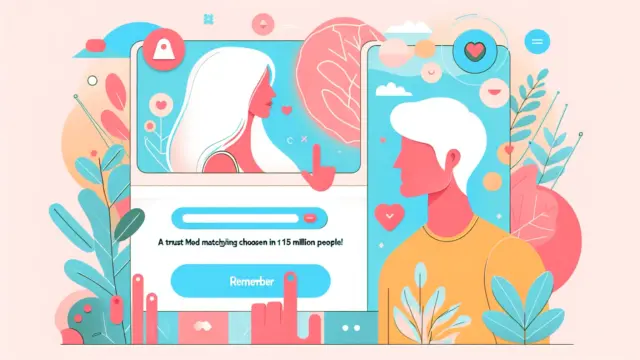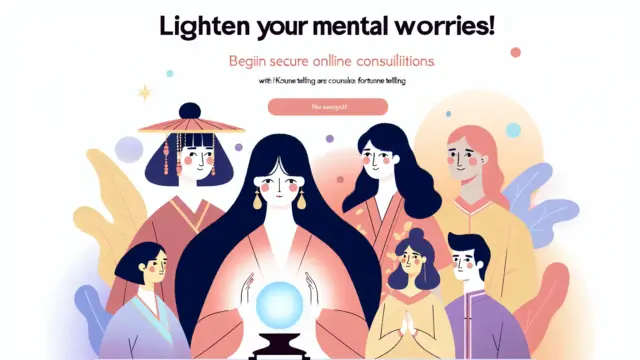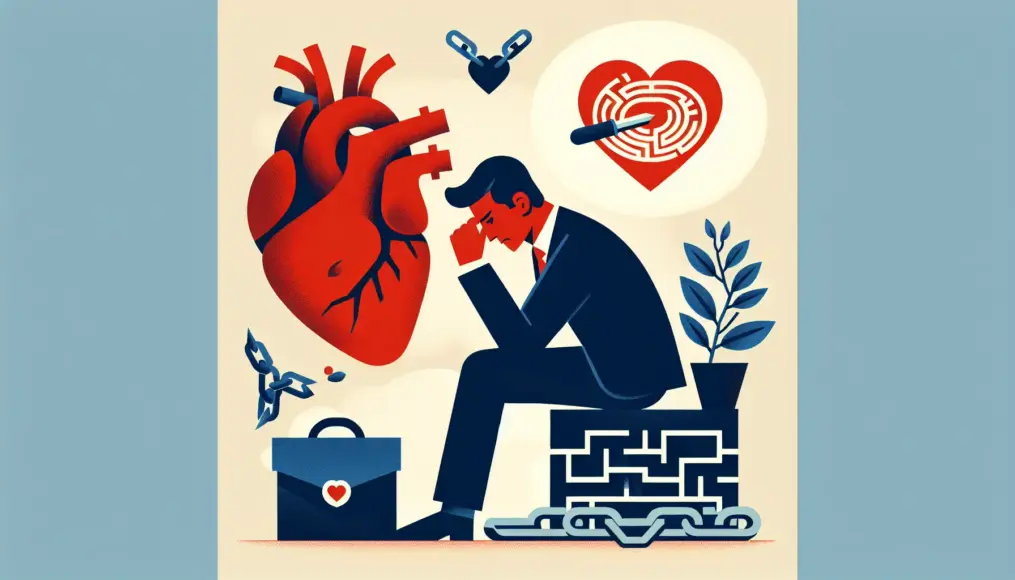When a woman rubs her partner’s back, it goes beyond mere physical affection; there’s a deeper psychological context at play. This act can serve as a significant expression of love and communication, particularly for women. If you’re looking to deepen your relationship with your partner, understanding the psychology behind this behavior could be incredibly beneficial.
In this article, we’ll explore the reasons why women engage in back rubbing, the psychological backgrounds associated with it, and the effects this behavior can have. Through the lens of relationship psychology, we’re here to shed light on insights that could enrich your love life.
- A fundamental understanding of back rubbing and its psychological perspectives
- The unique psychological background and social context for women
- The effects of back rubbing and real-life experiences
Understanding the Basics of Back Rubbing
Back rubbing is a common form of physical affection that often carries hidden psychological meanings. For many women, this act serves as an important way to express love and compassion. By exploring how this behavior is performed and what it signifies from a psychological standpoint, we can deepen our romantic and interpersonal relationships.
Common Reasons for Back Rubbing
Rubbing someone’s back is widely recognized as a gesture that fosters comfort and intimacy. Especially during stressful or anxious times, the desire to soothe someone through this action can be quite apparent. Women often express their emotions through physical touch, making back rubbing a particularly effective way to convey their feelings.
Additionally, this act demonstrates kindness and consideration toward the other person. It often occurs unconsciously with those we trust, highlighting the deeper meanings behind this behavior.
- Back rubbing creates feelings of comfort and intimacy
- It serves as an act to alleviate stress and anxiety
- Often performed unconsciously with trusted individuals
A Psychological Perspective
From a psychological viewpoint, back rubbing plays a crucial role as a form of “tactile communication.” Women, in particular, tend to strengthen emotional connections not just through words, but also through physical touch. Such interactions can stimulate hormone release, enhancing feelings of closeness with the other person.
Moreover, back rubbing can be an effective way to provide psychological support, as it allows one to connect with the other person’s feelings. Given that women often place a high value on emotions, this gesture can help convey compassion and strengthen the bond between individuals.
If you found this article interesting, you might also enjoy reading “The Psychology Behind Men’s Touch: What Their Actions Really Mean!.” This piece delves into the psychological motivations behind men’s touching behaviors, offering insights that can enhance your romantic relationships. Together with the understanding of back rubbing, it can deepen your comprehension of communication with the opposite sex.
- Back rubbing is part of tactile communication
- Women tend to enhance intimacy through physical touch
- It serves as an effective means of providing psychological support
The Unique Psychological Context for Women
The act of a woman rubbing someone’s back carries a unique psychological significance. This gesture is more than just physical contact; it is deeply rooted in a woman’s emotions and the social context around her. By rubbing someone’s back, a woman expresses her compassion and uses it as a way to strengthen her bond with the other person. In this section, we’ll explore why women engage in back rubbing and its social implications.
Reasons Women Rub Backs
There are various reasons behind a woman’s decision to rub someone’s back. Primarily, it serves as an expression of affection, showcasing her thoughtfulness and kindness toward the other person. When a woman rubs the back of her partner or a close friend, it helps to bridge emotional distances and provides a sense of comfort.
Additionally, women are often seen as being more attuned to their emotions and possessing a strong capacity for empathy. Rubbing someone’s back allows them to connect with the other person’s feelings, providing emotional support and reinforcing their psychological bond. Thus, this act becomes a vital means of expressing love and empathy.
- Expressing love through back rubbing
- Actions that provide comfort to others
- Strengthening psychological connections through emotional support
Social Context and Its Significance
The act of rubbing someone’s back also holds important meaning within social contexts. Particularly among women, this gesture is frequently used as a means to emphasize friendship and connection. By rubbing a friend’s back, a message of “I care about you” is conveyed, deepening trust and mutual understanding.
Moreover, the context in which back rubbing occurs can influence its meaning. For instance, in stressful situations or tense environments, this action can promote relaxation and serve as encouragement for the other person. In this way, back rubbing is positioned as a significant tool for fostering women’s social connections.
- Actions that emphasize friendship and bonds among women
- A means of conveying important messages
- Promoting stress relief and relaxation
The Benefits of Rubbing Someone’s Back
Rubbing someone’s back is not just a simple gesture of affection; it carries a range of psychological benefits. For many, especially women, this act plays a crucial role in stress relief and serves as a form of communication. By engaging in back rubbing, individuals can deepen their connections with others and foster a sense of emotional stability. In this article, we will explore the various effects of back rubbing.
A Powerful Stress Reliever
One of the most significant benefits of rubbing someone’s back is its effectiveness in reducing stress. Physical touch has been shown to trigger the release of oxytocin, a hormone that promotes relaxation and a sense of security. Women, in particular, tend to favor physical contact as a means of expressing emotions, which means that back rubbing can help both the giver and the receiver feel more at ease.
Moreover, when you rub the back of someone who is feeling stressed, it can act as a source of emotional support, helping them to feel more secure. This simple act not only provides psychological comfort but also helps strengthen the bonds of trust between individuals.
- Oxytocin is released when you rub someone’s back
- Promotes relaxation and a sense of security
- Contributes to alleviating the other person’s stress
An Essential Part of Communication
Rubbing someone’s back also plays an important role in communication. It allows individuals to express emotions and feelings that words alone may not convey. This is particularly true for women, who often place a high value on non-verbal communication. By engaging in back rubbing, one can adjust the emotional distance between themselves and the other person, enhancing intimacy.
This gesture is often directed toward those with whom a strong sense of trust has been established, serving as a way to communicate care and affection. Ultimately, back rubbing can create opportunities for building better relationships.
- Functions as a form of non-verbal communication
- Adjusts emotional distance and deepens intimacy
- Strengthens trust and connection
Real-Life Experiences and Case Studies
To gain a deeper understanding of the act of back rubbing, real-life experiences and case studies can be incredibly insightful. They reveal how this behavior impacts daily life through the voices of actual women. In this section, we’ll explore why women rub each other’s backs and share some firsthand accounts of these actions.
Women’s Testimonials
One woman shared that during a particularly stressful time at work, her partner rubbing her back helped lighten her mood. “In that moment, just having my back rubbed made me feel safe without having to say a word,” she recalled. This highlights the psychological effects of back rubbing, which can convey more than words alone.
Additionally, this behavior can also be seen among friends. Another woman recounted how she rubbed her friend’s back when she was feeling down, hoping to lift her spirits. “I couldn’t express it well with words, but I believe rubbing her back eased her feelings a bit,” she said. These experiences illustrate how back rubbing serves as a powerful means of enhancing relationships.
- Experiences of finding comfort through back rubbing
- Psychological support from friends through back rubbing
- The effectiveness of non-verbal communication
Examples of Back Rubbing Behavior
Back rubbing occurs in various situations. For instance, it’s not uncommon to see close friends rubbing each other’s backs at casual gatherings or parties. This act can serve to reaffirm their intimacy and help lighten the mood.
In romantic relationships, partners often rub each other’s backs in relaxed settings, deepening their affection and trust. This behavior frequently happens when they want to share emotions or encourage one another. Thus, back rubbing has become an important gesture for strengthening connections in different scenarios.
- Back rubbing among friends in casual settings
- A gesture to deepen affection and trust between partners
- Actions that strengthen relationships in various contexts
Summary
It turns out that the act of gently rubbing someone’s back holds significant psychological meaning for women. This gesture serves not only as a way to express affection and compassion but also plays a role in reducing stress and enhancing communication. Insights from personal experiences and case studies reveal that many women deepen their connections with others through this simple action.
Moreover, rubbing someone’s back can provide a sense of comfort, strengthening the emotional bond between individuals. As such, this action is closely intertwined with women’s psychology, playing a vital role in both romantic relationships and friendships.
- Rubbing someone’s back is a means of expressing love and compassion.
- It has stress-relief benefits and provides psychological support.
- Real-life experiences highlight the importance of this form of communication.
Why not explore this gesture yourself and see how it can strengthen your own connections? We’d love to hear about your experiences in the comments!









Comment